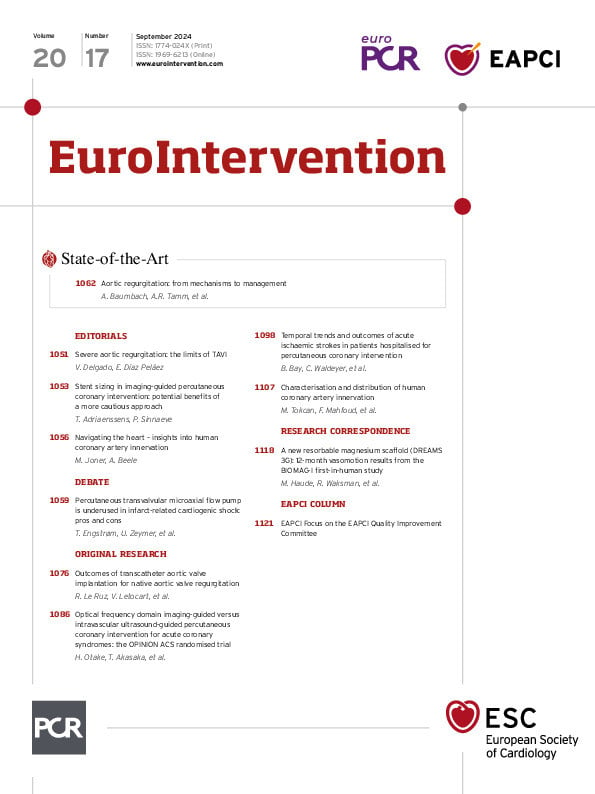BIOMAG-I is a European, multicentre first-in-human study assessing the safety and performance of a third-generation sirolimus-eluting resorbable magnesium scaffold (DREAMS 3G, commercial name Freesolve [Biotronik AG]). This is a next-generation scaffold with improved radial support and stability, a reduced strut thickness, and an increased size portfolio compared to its precursor DREAMS 2G (Biotronik), while the resorption period of 12 months has been maintained1. This substudy measures drug-induced vasomotion after complete scaffold resorption at 12 months.
The study was approved by the centres’ ethics committees, and all patients provided additional informed consent for vasomotion assessments in 2 study centres. Endothelial-dependent vasomotor reactivity was estimated by selectively infusing incremental doses of acetylcholine (ACh) into the target coronary artery: ACh1 (low dose) 0.36 μg/ml, ACh2 (middle dose) 3.6 μg/ml, and ACh3 (high dose) 18 μg/ml. Each ACh concentration was infused at a speed of 2 ml/min for 3 minutes. Contrast injection and angiographic images were taken at the end of the ACh infusion for each concentration.
When the maximum tolerated ACh dose was administered, an intracoronary bolus injection of nitroglycerine (NTG, 200 μg) was...
Sign up for free!
Join us for free and access thousands of articles from EuroIntervention, as well as presentations, videos, cases from PCRonline.com




